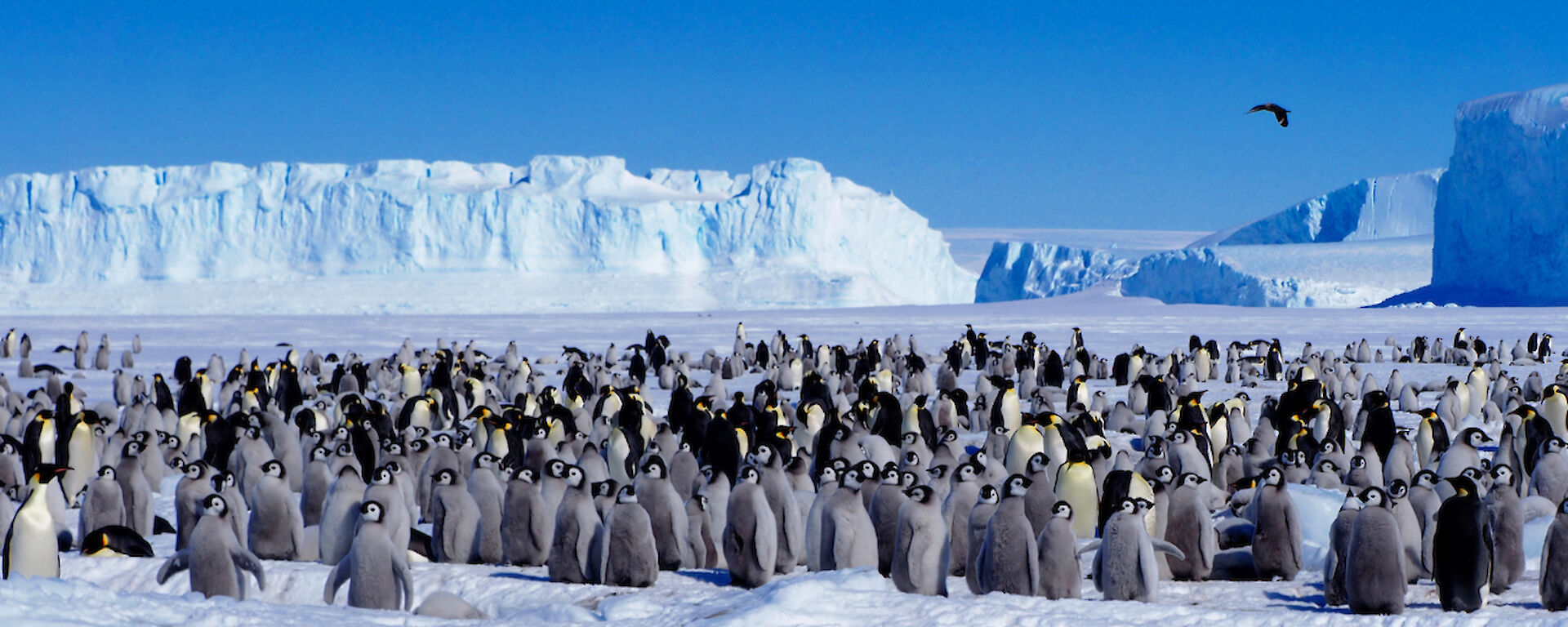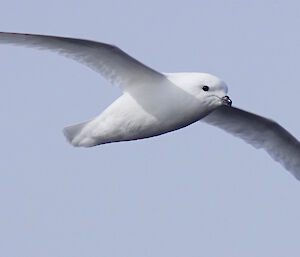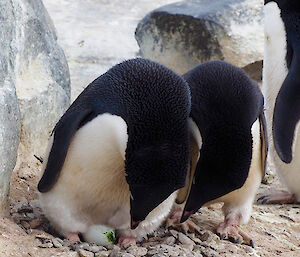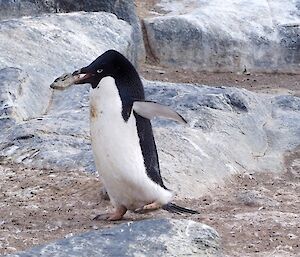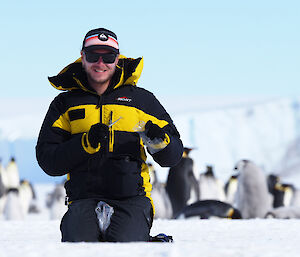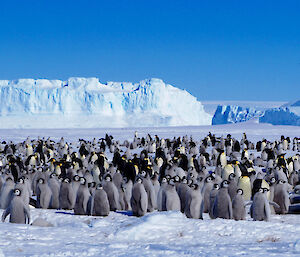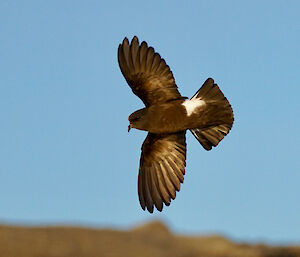It is an exciting time of the year here at Mawson Station. As the infamous blizzards somewhat abate and the sun shines occasionally, seabirds can be seen everywhere: raising chicks, laying eggs or prospecting for partners and that perfect nest site. And perfect timing, as we have just arrived via the Basler aircraft with the influx of summer expeditioners. As the two summer biologists we have the dream job of collecting samples (poo!), data and observing the secret lives of seabirds.
Last week we trundled off to Auster Rookery to collect emperor penguin poo. While we were there, we couldn’t help but gaze awestruck at the emperor penguin colony and their fast growing chicks, as their parents curiously investigated us!
The DNA of prey found in faeces can help us identify what their parents have been feeding them and what diseases may be present. The penguins, surrounding icebergs, rare sunshine and Stanley (our trusty supervisor) made the trip seem like a dream.
We also completed nest camera maintenance along the way. Our remotely deployed camera system, attended to by a dedicated team of winter expeditioners (thanks team), observes the seabird cycle all over East Antarctica. The data collected is part of our long term monitoring program, and over time shows how many birds are breeding, when they breed and how successful they are.
Another one of our long term monitoring tasks that informs the CCAMLR Ecosystem Monitoring Program (CEMP) is resighting Adélie penguins that come and go from Béchervaise Island. The study site at Béchervaise Island (or Béche) has been monitoring penguins for 30 years and along with tracking key foraging areas and variations in breeding, it aims to ensure that krill harvests do not affect the food source of Antarctic breeding species, such as Adélie Penguins. Our first task is to see who is back and breeding, and we achieve this by reading microchips and counting all the penguins! That’s right; enter the clicker counter and two dedicated scientists. We visit all Adélie penguin colonies in the Kista Islands (near Mawson station) and count each one… there is usually around 20,000 or so! One, two, three….
While at Béche, we are also keeping an eye out for skuas, snow petrels and Wilson’s storm petrels. The beautiful skuas are just returning to their breeding sites (anywhere close to food sources-aka penguins). They are endeavouring to find their partner and build a nest. Once established, they protect their territory with vigour from other skuas and the occasional biologist, who attempts to move quietly past them or collect their precious poo, for (you guessed it!) diet and disease analysis.
In addition to skuas, both petrel species were observed flying around. The white snow petrels returned to Mawson a few weeks ago and have now found a partner and cavities to nest in, had a lovely honeymoon, and are now back to lay an egg! As for the smallest of all seabirds, the 30g Wilson’s storm petrels, we are still not sure of the timing of breeding, but we’re about to find out! Last year biologist, Marcus, spent a lot of time searching for nest locations and … you guessed it, poo! We now have a monitoring site and some remote cameras to deploy for monitoring the Wilson’s, so stay tuned for exciting news as the seabird cycle continues.
- Kim Kliska & Marcus Salton (Mawson Field Biologists Summer 2019/20)

